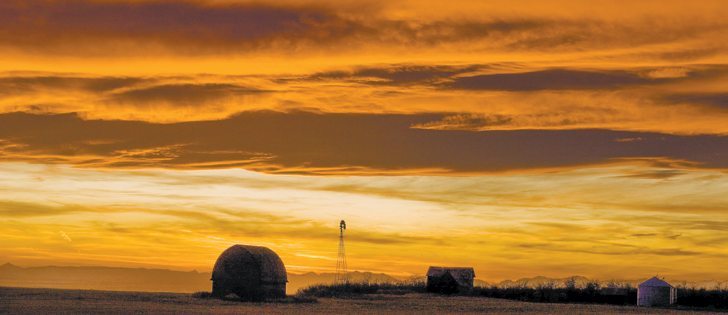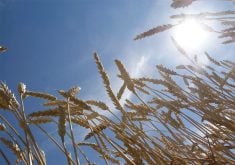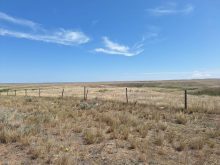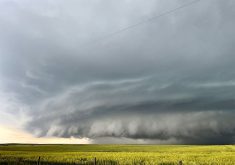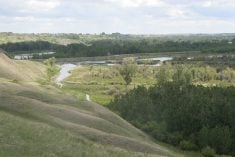Semi-trailers are blown onto their sides, empty grain bins are crushed like pop cans and big round straw bales roll away to parts unknown when the chinook blows strong in southern Alberta.
In winter, snow disappears overnight and temperatures can rise 20 degrees in a day. In summer, the wind dries everything in its path and swipes loose objects from those who forget to keep them locked up or nailed down.
Such is the bane and blessing of the warm and powerful western winds that race down the eastern slopes of the Rocky Mountains and across the foothills and prairie.
Read Also
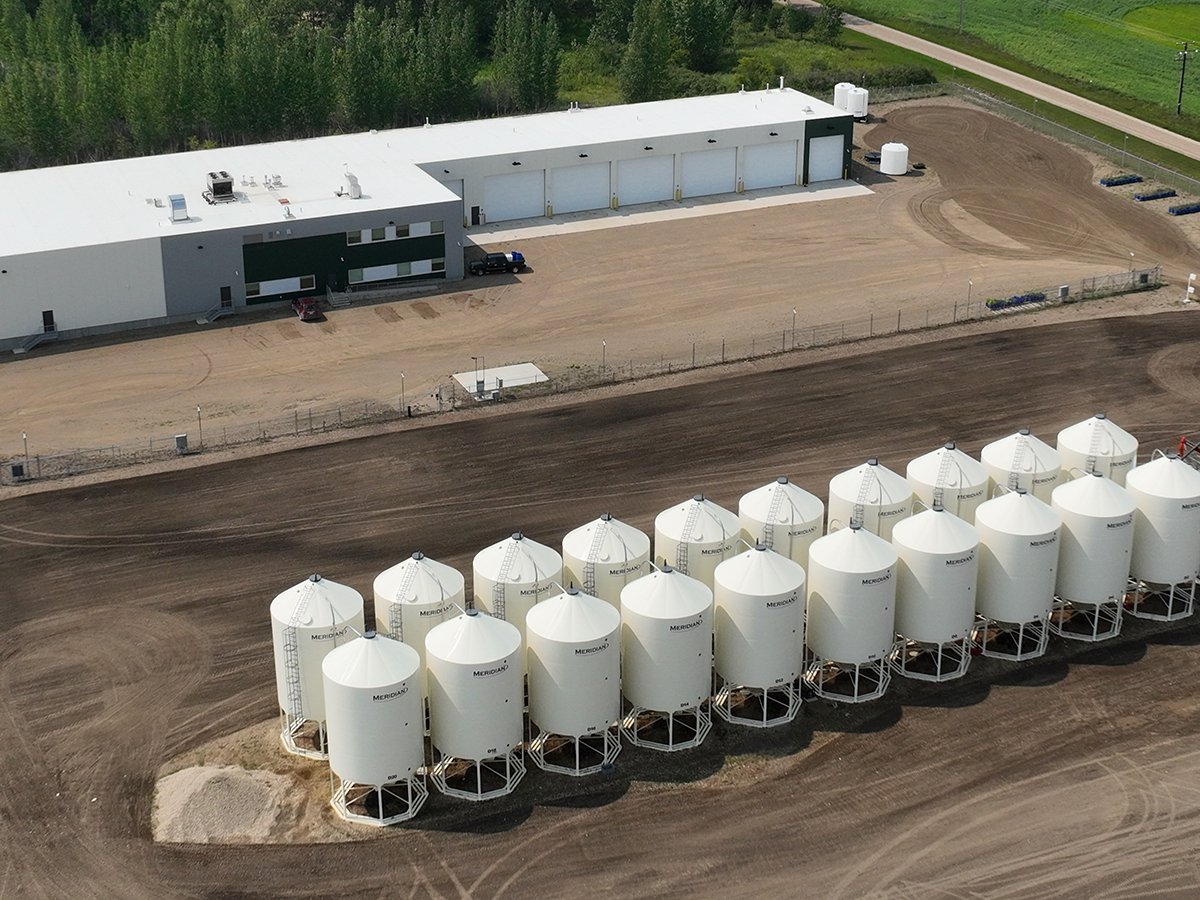
Saskatchewan firm aims to fix soil with compost pellets
In his business, Humaterra, Leon Pratchler is helping farmers maximize yields in the weakest areas of their fields through the use of a compost pellet.
Chinook, also called the snow-eater in First Nations lore, is borrowed from the Chinook Indians who lived in the Columbia River region, where it was once thought the wind originated.
“Few regions in Canada are so profoundly influenced by the direct and indirect effects of a specific weather phenomenon,” Agriculture Canada researcher Barry Grace wrote in a 1987 article about chinooks.
The record wind speed for Lethbridge, the agricultural hub of the region, is 171 km-h, which was set in November 1962. A wind of that speed would be deemed a hurricane in other places, but there’s a proviso, says Agriculture Canada agro meteorologist Sean McGinn.
“That was a wind gust. When we record wind speed, we record five, 10 and I think 15 minute gusts, plus the hour average. A five minute gust can do a lot of damage at 171 km-h, but if you average that over a whole hour.…”
Winds of 80 to 105 km-h during a chinook are more common, and the average wind in the Lethbridge region without a chinook is 21 km-h, said McGinn.
Those who live in chinook country both love the wind and hate it.
It’s a nuisance, but it shortens winter. It causes migraines, but it’s warm. And good hair days? Not during a chinook.
That aside, chinooks have helped define agriculture in the region mostly because of their drying effects.
“The big thing is that chinooks tend to take away our snow in the winter time, and when we do have snow on the ground, that snow evaporates very quickly, so virtually all that moisture goes up into the air and very little soaks into the soil,” said soil scientist Ross McKenzie of McKenzie Ag Consulting.
“The negative is the lack of moisture, but with farmers in the last 20 years shifting to direct seeding, keeping their stubble up, keeping good residue on the cover, we tend to get a lot less evaporation or moisture loss when we do have those chinook events.”
Though chinooks have affected this part of the world for a long time, McKenzie said it’s only in the last 30 years that farmers have adapted well to the challenges they bring.
Farmers once used summerfallow to conserve moisture. Though it may have been effective in other climates, the mighty winds sapped that moisture and left fields subject to erosion.
“We get approximately 20 to 30 percent of our precipitation in the wintertime, so 130 to 140 milli-metres falls as snow, so that moisture is not available because most of it is lost during the chinook,” said McGinn.
McKenzie attributes some of the shift away from summerfallow to Agriculture Canada researcher Asael Palmer, who worked at the Lethbridge Research Centre and suggested it was counterproductive for area farmers.
“It’s been a really long, slow evolution, that really in the last 20 to 30 years, farmers have really done a good job of adapting.”
Chinook country farmers were early adopters of direct seeding and the use of drought tolerant crops. The climate also demanded the development of an extensive irrigation system that led to crop diversity and high-volume production.
However, McKenzie said the snow eater’s work also brings advantages to farmers.
“With the chinooks, usually our snow is typically gone by mid to late March, so it’s not uncommon for farmers in southern Alberta to be seeding by mid-April, so that kind of extends our growing season,” he said.
“The big advantage is that they give us the opportunity to seed earlier and then take advantage of capturing that sun for a longer period of time and actually having higher yield potential than farmers east or north.”
Winter crops, including winter wheat, fall rye and winter triticale, fare well because of the mild winters fashioned by chinooks.
In his former role with Alberta Agriculture, McKenzie also saw the promise of winter peas.
“We grew them successfully every year at Lethbridge and most years successfully at Brooks,” he said.
In contrast, winter pea test plots in Lacombe in central Alberta usually didn’t survive and those north of Edmonton never survived.
“Because our soil temperatures don’t get nearly as cold, I think there are better opportunities to grow some of these winter crops in southern Alberta before we’d be able to grow them in other areas of the Prairies … so that’s certainly an advantage as well.”
However, with the good comes the bad. A winter chinook that melts the snow just enough to form an ice layer can cut off oxygen and force winterkill of winter wheat and alfalfa.
The winter warmth can also allow crop diseases and insect pests survive and create problems the following season.
The warm weather can also be a mixed blessing in cattle country.
The higher temperatures that deplete snow can extend the grazing season, and some ranchers are able to graze year-round.
A big snow followed by a quick thaw can create muddy pen conditions in feedlots, but warmer weather means that animals re-quire less feed.
“Overall, I would say it’s a lot more positive because we do have warmer conditions overall in the winter and the summer,” said McKenzie.
“I think that generally it gives us a longer growing season. Certainly it is drier, but farmers are really compensating for that with our farming practices. I think with the diversity of the crops we can grow, the longer growing season, farmers have really been able to manage things quite nicely.”
McKenzie grew up in chinook country and remembers one Christmas event fondly.
“When I was six years old, I got a bike for Christmas … and I learned to ride it on Christmas day because there was no snow.”
Top 10 songs about wind
- 1. Windy (The Association)
- 2. She’s Like the Wind (Patrick Swayze)
- 3. Candle in the Wind (Elton John)
- 4. Blowin’ in the Wind (Bob Dylan)
- 5. Ride Like the Wind (Chris Cross)
- 6. Wind Beneath my Wings (Bette Midler)
- 7. Blown Away (George Harrison)
- 8. Dust in the Wind (Kansas)
- 9. Wind of Change (Bee Gees)
- 10. Against the Wind (Bob Seger)
The Wind in Pincher Creek
I have done some travellin’
To places far away
Just to feel and hear the wind
As it travels on its way.
Those northers down in Texas
Can chill you to the bone
And the blizzards in Alaska
Will turn your blood to stone.
There’s twisters in the Midwest
That wreck all in your path
And there’s other places in the world
Where the wind will show its wrath.
But from Cape Horn to the Circle
And destruction in the Keys,
All the fury of the wind
In Pincher Creek is called a breeze.
What causes a chinook?
The Rocky Mountains lie in the path of prevailing westerly winds. As moist Pacific air from the west reaches and then rises over the mountain range, it cools and loses much of the moisture it carries. The now-dry wind warms as it rushes down the leeward side.
Pressure systems also play a role. Air is drawn into a low pressure system on the lee side of the Rockies. Such a system is often associated with a ridge of high pressure over the mountains, setting up a wave of troughs and crests parallel to the mountain range.
A strong chinook is characterized by a chinook arch, a cloudless area just above the Rockies that is the sign of a pending or current chinook condition. The size and amplitude of the system depend on the strength of the upper westerly winds, air mass conditions and local topography.


